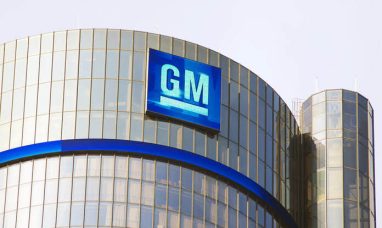Nikola (NASDAQ:NKLA)
Nikola (NASDAQ:NKLA) has been a frequent headline in recent years due to a management shakeup after fraud accusations that resulted in a $125 million settlement with the SEC. The company’s fortunes have been steadily improving since then, and in the most recent quarter, they began to show signs of life in terms of sales.
To combat the substantial initial investment required to operate an EV business, Nikola focuses on a few key areas. Although Tesla was never accused of fraud, it too was met with early cries for failure. The firm is on pace to considerably boost production in 2023 after delivering 73 vehicles throughout the quarter. With over $300 million in the bank right now, the company plans to use favorable market conditions, such as the government subsidies granted to electric vehicle (EV) truck manufacturers, to better compete in the market.
Although the firm has yet to produce 300 automobiles as planned for 2022, the present growth in inventory indicates a rather stable future.
To back up Tre BEV production in Q4 2022 and 2023, the company’s chief executive officer said that the company’s inventory had grown from $52.1 million in Q2 to $81.1 million at the end of Q3. It was determined in a conference call.
Nikola has a healthy financial sheet and sufficient assets to continue raising money through 2023, which should put it on a path to profitability by 2024.
The bankruptcy rumors are overblown, and the corporation is on the road to long-term success after resolving several previous problems. To reach profitability, automotive businesses often have to raise cash many times, and Nikola is no different. Investors should purchase the shares only if they are OK with the possibility of a stock dilution or a capital increase through convertible/debt liabilities.
Forecast for Nikola’s Market
Nikola is still in the business of making electric and fuel-cell electric cars and providing power systems. The Tre BEV, a fully electric, heavy-duty vehicle, is the firm’s only product at this time. However, beginning in 2023, the business intends to introduce two fuel-cell trucks, the TRE fcev and the TWD fcev, which should enhance its product portfolio and revenue forecast.
Under its new brand name Hyla, Nikola is also developing several energy alternatives, such as a hydrogen infrastructure. Even though electric trucks should be equally profitable and the infrastructure projects will likely be essential to Nikola’s profitability, investors are focusing more on the company’s fuel cell activities than on its electric vehicle operations. Through 2022, Nikola upgraded its infrastructure and set up shops in several additional cities, including Long Beach, California. Despite competitors like Tesla, which has 1400 supercharging stations, the business plans to produce 300 tons with 50-60 hubs around the U.S. by 2026. Hydrogen is much quicker to replenish, and the dynamics of trucking differ from those of EV vehicles. Therefore this should have little impact on the firm.
Due to Green Incentives, the Price Is Almost the Same as the Diesel
Compared to the typical price of $170,000, a Nikola vehicle would set you back roughly $275,000. Following the announcement that the business would not manufacture the electric pickup, shares dropped sharply.
Since then, the firm has strengthened its business strategy to win over customers and stay ahead of rivals. In addition to a credit line and green certificates worth up to $185,000, the corporation gives various incentives to truck drivers. The credit lines and certificates make purchasing the vehicles a very enticing option.
In addition, by the time the next generation of trucks is released, the design will likely position the corporation at the forefront of the electric vehicle industry due to its superior mileage, economy, torque, and other attributes.
The heavy-duty truck market is now valued at $200 billion, with future growth anticipated to be between 6-7% CAGR over the next five years. Given the current truck shortage and widespread effort to lower emissions, Nikola is in a prime position for a very profitable future. The future of demand when incentives are removed is still being determined. The company’s future looks bright as long as it can increase output.
Is the Company’s Current Cash Expenditure Rate Sustainable?
Over the last three months, Nikola burned through $118 million in cash while raising $482 million via various financing operations such as convertible notes, the issuing of shares under the Tumim Purchase Agreement, and the dilution of common stock. Thus, the corporation finished the quarter with $403 million in cash and equivalents. Investment in plant property and equipment was $118 million of the overall outlay. If production projections hold, that figure may rise to nearly $700 million quarterly by 2023. In other words, the amount of money that may need to be raised in 2023 may be anywhere from $1.5 billion to $2 billion.
Nikola is projected to raise capital in 2023 via the sale of debt, convertible notes, and the issuance of ordinary stock since the current run rate in terms of cash outlay is expected to expand. This confluence of events will undoubtedly impact the market cap and the stock price, but the underlying fundamentals are unaffected over the long run.
Accordingly, liquidation and collapse are quite improbable soon. However, the present market capitalization of $1.35 trillion is down dramatically from the $2.50 billion it was only 6 months ago, as the stock price fell from $7 per share due to the company’s lackluster performance. Even if the stock price stabilizes, the company’s market valuation will need to grow as it deals with increasing output.
In 2023, the firm is expected to supply between 500 and 1000 automobiles based on projections using management principles and the present operating rate. However, even at the low end of the range, the firm is expected to earn between $125 and $175 million in sales this year. However, investors need not be concerned since the output will increase rapidly in 2024 when both new items and more capacity go live.
Finally, this would likely increase overall car production throughout 2024, which would be great news for the company’s financial health. Investors will have to be patient for the desired outcome. The present picture is favorable, however, for long-term investors. No one should expect to make money in the short term, but investors with a long-term perspective (say, 10 years) may discover that the stock has improved.
Featured Image: Megapixl @ Jetcityimage









